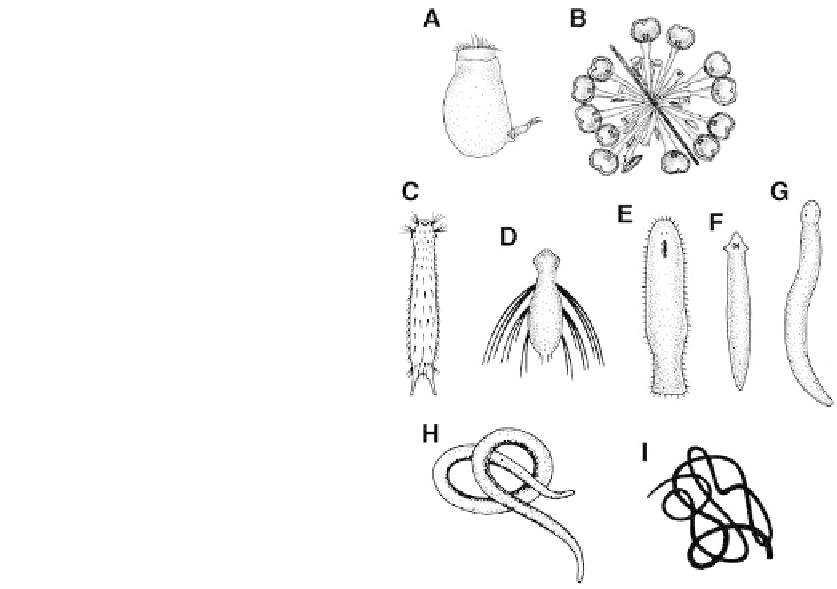Environmental Engineering Reference
In-Depth Information
FIGURE 9.3
Representative rotifers (A and B), gastrotrichs (C and D), flatworms (E-G),
and roundworms (H and I). Organisms shown and their approximate lengths are as follows:
(A)
Gastropus,
0.3 mm; (B) a colony of
Sinantherina,
colony diameter 2 mm; (C)
Chaetono-
tus,
0.4 mm; (D)
Stylochaeta,
0.4 mm; (E)
Macrostomum,
2 mm; (F)
Dugesia,
10 mm;
(G)
Protostoma,
20 mm; (H) a nematode, 1 mm; (I) a horsehair worm Nematomorpha,
10 cm (reproduced with permission from Thorp and Covich, 1991b).
Planaria are probably the best known turbellarians to beginning stu-
dents, and they are common in freshwater habitats, as well as subjects of
study in introductory biology laboratories. These organisms are distinguished
by the extension of a muscular pharynx from the mouth that ingests food.
Microstomum
and some related genera have the interesting adaptation of in-
gesting
Hydra
and retaining their undischarged nematocysts, which are kept
on the body surface and serve as a defense (Pennak, 1978).
The flukes represent one of the major groups of animal parasites of hu-
mans. Some of these have life stages or rely on aquatic hosts for part of
their life cycle. The flukes include
Schistosoma,
the cause of schistosomia-
sis. This parasite uses pulmonate snails as the intermediate host, so under-
standing the epidemiology of this parasite requires knowledge of the ecol-
ogy of snails. An estimated 200 million people are infected worldwide, and
about 20 million of those have severely debilitating infections. Swimmers'
itch is caused by a related fluke that is normally parasitic on birds.
The nonsegmented worms in the Nemertea are distinguished from the
Turbellaria by having an anus and closed circulatory system. Twelve fresh-
water species and many more marine species have been described. All
known species are benthic predators (Kolasa, 1991).

Search WWH ::

Custom Search